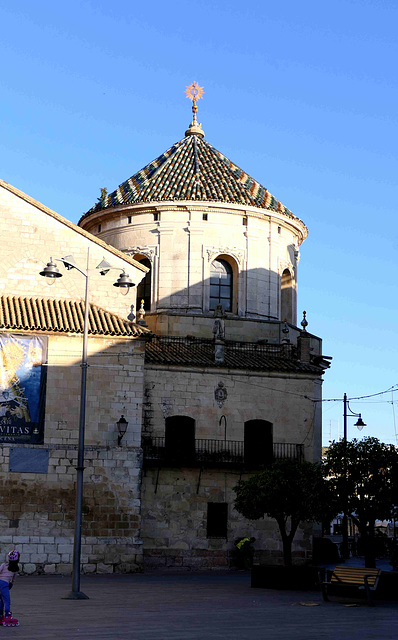Kapitell mit zwei Löwen
Chiesa di Santa Maria Impenso, Narni
Drache und Hirsch
Drache
Chiesa S. Maria Impensole, Narni, Umbria - (4 x P…
Carved Grafitti
Greece - Kalogerorachi, Zoodochos Pigi Samarina
HWW !
Greece - Koroni, Monastery of Timios Prodromos
St. Georgenkirche - Eisenach
St. Martin
Nikolaikirche - Eisenach
In der Schlosskirche
Perleberg, Markt mit Rathaus und Kirche
Lutherdenkmal in Eisenach
Greece - Arkoudi, Church of Saint Nicholas
Schiffer-Kirche St. Marien (5 PiPs)
Kirche in Helsingborg
Kirche in Kristianstad
Kirche von Kristianstad
Nikolaikirche - Leipzig
Greece - Kalavryta, Agia Lavra Monastery
Bench for lovers
Lucena - Iglesia de San Mateo
Greece - Vasta, Agia Theodora
Church of Saint Francis of Assisi.
Chapel of the Lord of the Souls.
Cartuja de Jerez de la Frontera
Greece - Petralona, Andromonastiro
Saint Anthony Church.
Bar of Flor da Rosa Pousada.
Swimming pool of the pousada.
Cloister with the Cross of Malta.
Flor da Rosa Monastery (14th century).
Parish Church.
Greece - Kalamata, Kalograion Monastery
Chapel of Our Lady of Good Success.
Greece - Kalamata, Church of the Holy Apostles
Church of Mercy (17th century).
Saint Sebastian Chapel.
Mother Church of Our Lady of Conception.
Greece - Mavrommati, Voulcanou Monastery
Ordem Terceira Sao Domingos Church - Pelourinho -…
Greece - Kalamata, Ypapanti cathedral
Stavenow Kirche Interior
Location
Lat, Lng:
You can copy the above to your favourite mapping app.
Address: unknown
You can copy the above to your favourite mapping app.
Address: unknown
See also...
Keywords
Authorizations, license
-
Visible by: Everyone -
All rights reserved
-
83 visits
Lucena - Iglesia de San Mateo


Lucena was known to the Moors as Al-Yussena. From the 9th to the 12th century, Lucena was an important Jewish center and was characterized by a predominantly Jewish population. In the 11th century, there was a large Talmudic academy here.
With the beginning of the Almoravid and Almohad rule, the number of Jews fell drastically. The Jews fled to places in the Christian north, were forcibly converted to Islam or deported as prisoners to North Africa. Lucena was conquered by the Almohads in 1148, after which it ceased to exist as a Jewish center.
Today, Lucena is a city with around 50,000 inhabitants and is known for its “Semana Santa”.
The church of San Mateo was built on the ancient ruins of the main synagogue of Lucena. After the arrival of the Almohad Empire in 1138, the synagogue was converted into a mosque and, finally, in 1240 it was consecrated as a church after the conquest by Ferdinand III of Castile.
In 1498, when Diego Fernández de Córdoba, governor of the Donceles and I Marquis of Comares, decided to demolish the original structure by virtue of its new status and build a new temple under the design of the architect Hernán Ruiz I. The tower was completed in 1501 and the church was probably completed in 1544.
The octagonal tabernacle chapel is a landmark of Andalusian Baroque, designed by Leonardo Antonio de Castro and built between 1740 and 1772
With the beginning of the Almoravid and Almohad rule, the number of Jews fell drastically. The Jews fled to places in the Christian north, were forcibly converted to Islam or deported as prisoners to North Africa. Lucena was conquered by the Almohads in 1148, after which it ceased to exist as a Jewish center.
Today, Lucena is a city with around 50,000 inhabitants and is known for its “Semana Santa”.
The church of San Mateo was built on the ancient ruins of the main synagogue of Lucena. After the arrival of the Almohad Empire in 1138, the synagogue was converted into a mosque and, finally, in 1240 it was consecrated as a church after the conquest by Ferdinand III of Castile.
In 1498, when Diego Fernández de Córdoba, governor of the Donceles and I Marquis of Comares, decided to demolish the original structure by virtue of its new status and build a new temple under the design of the architect Hernán Ruiz I. The tower was completed in 1501 and the church was probably completed in 1544.
The octagonal tabernacle chapel is a landmark of Andalusian Baroque, designed by Leonardo Antonio de Castro and built between 1740 and 1772
William Sutherland, Dimas Sequeira, Alexander Prolygin have particularly liked this photo
- Keyboard shortcuts:
Jump to top
RSS feed- Latest comments - Subscribe to the comment feeds of this photo
- ipernity © 2007-2025
- Help & Contact
|
Club news
|
About ipernity
|
History |
ipernity Club & Prices |
Guide of good conduct
Donate | Group guidelines | Privacy policy | Terms of use | Statutes | In memoria -
Facebook
Twitter

Sign-in to write a comment.